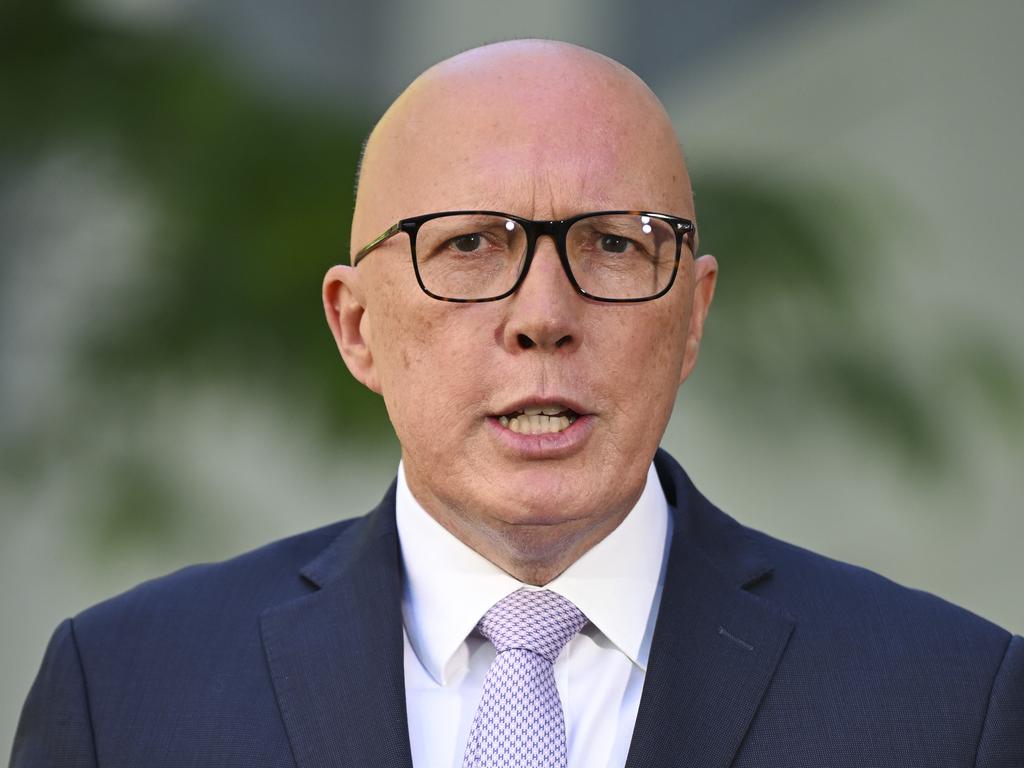Japanese-backed offshore wind project left adrift as it awaits decision from Chris Bowen
A Japanese-backed offshore wind developer may be forced to walk away from building one of Victoria’s biggest electricity projects as a legal standoff with Chris Bowen has paralysed progress.

A Japanese-backed offshore wind developer may be forced to walk away from building one of Victoria’s biggest electricity projects as a legal standoff with federal Energy Minister Chris Bowen paralyses progress on the facility, while ceding ground to rival ventures.
Flotation Energy’s proposed Seadragon project in Gippsland was widely seen as Australia’s second-most-advanced offshore wind-power generation project, given it held government grants and major project status.
When Mr Bowen surprisingly rejected the application of the developer, backed by one of Japan’s largest utility companies, Flotation challenged the validity of his decision-making process and won.
The court ordered Mr Bowen to reconsider his rejection, a process industry sources said should have happened quickly.
But The Australian understands that nearly three months on, the project remains in limbo and Mr Bowen has yet to inform the developer about whether it has secured a licence.
Flotation declined to comment, but sources familiar with the situation said the delay would threaten the viability of the project even if Mr Bowen reversed his decision and awarded a so-called feasibility licence.
“They will be months behind the other developers,” said one source familiar with the situation who declined to be named.
“The Victorian government has said it will hold the first auction this year and Flotation will have so far done very little work.
“Every day that goes past causes more damage to the prospects of the project.”
Representatives for Mr Bowen did not immediately comment when contacted by The Australian.
The Australian exclusively revealed the decision before the announcement.
Japanese officials travelled to Canberra after the decision in an attempt to change Mr Bowen’s mind.
Seadragon had asked to be given a development licence for a smaller area, which would have avoided any overlap, but Mr Bowen rejected that proposal, insisting he did not have the authority to change applications once submitted.
But the court rejected Mr Bowen’s defence, insisting the legislation gave him that authority. Mr Bowen has indicated the government will move to tighten the legislation as a result.
The Seadragon project was due to begin construction in 2028 with an expected operational date of 2030.
The decision has created a predicament for Mr Bowen.
The federal and Victorian Albanese governments regard offshore wind-powered generators as a critical part of plans to reach net zero emissions, and Flotation could play a role in helping Australia meet that goal.
But by going to court, Flotation has strained its relationship with Mr Bowen.
The company has strong credentials.
Flotation is a major offshore wind player and is backed by Japanese giant Tokyo Electric Power Company (TEPCO), which would be a major financial backer.
It has offshore projects in the commissioning and planning stages in Britain, Ireland, Japan, Taiwan and Australia.
To achieve their lofty goals, the federal and Victoria governments will need all the projects they can get.
Some industry figures believe many of the projects that have secured feasibility licences may not materialise.
The Victorian government in 2022 set a target of generating about 20 per cent of its energy needs from offshore wind generators within a decade.
The target then doubles to 4 gigawatts by 2035 and 9GW by 2040.

In all, the Victorian foresees potential for 13GW of offshore wind capacity by 2050, which is five times the current renewable generation in the state.
Should Victoria’s plan not be realised, the state will have to urgently develop an alternative or run coal-fired power stations for longer.
The state’s two largest coal power stations are set to close within 10 years.
EnergyAustralia’s Yallourn is now just three years away from shutting.
There has been widespread speculation that Yallourn’s operational life could be extended, though the company and the state government insist there are no plans to alter the date.
Victoria’s coastline is ideal for generating power offshore. The winds are very strong and consistent by international standards, while a large area of shallow ocean less than 50m-60m deep is suitable for wind turbine platforms to be fixed to the seabed. This is a much cheaper technology than the floating turbines that have to be used in deeper water.
Australian wholesale electricity prices have jumped in recent weeks amid coal power outages and transmission issues, threatening to elevate the next default pricing benchmark for electricity bills.
Electricity base contracts for 2024 are up across NSW (4.6 per cent), Victoria (5.6 per cent) and Queensland (7.5 per cent). Year on year, contract prices have grown by 19 per cent in NSW, 17 per cent in Victoria, and 25 per cent in Queensland.
Originally published as Japanese-backed offshore wind project left adrift as it awaits decision from Chris Bowen





